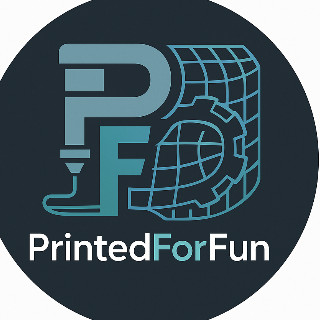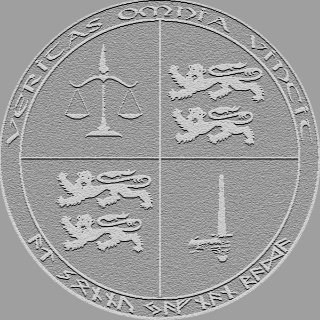Sorry for the slow progress. I am designing the tool with education in mind, providing for different students to see 3D scanning as a process and providing multiple oppotuninties for individu...
All Posts
-
Calibration Storage
Davis posted in THREE API and Programming •Drew,Thank you, this helps a lot. We are currently trying to use the camera without the turntable, so I'll just leave the camera at factory defaults for now. My only remaining question would b...
-
Calibration Storage
Drew Shark posted in THREE API and Programming •Hi Davis,Can you share your code for getting a calibration working with me? I might be able to help debug what's going on. Just to give you some confidence in the machine, the API's are all the sam...
-
Exploring Ring Scanning Options
Tom Meeks posted in General 3D Scanning Discussion •In educating any students; but, in particular, at-risk students, projects that promote critical thinking skills are highly desired. From personal experience, teaching hundreds of at-risk cade...
-
Calibration Storage
Davis posted in THREE API and Programming •Thanks, Drew.So all of the calibration-related tasks in the API are strictly for calibrating the turntable? I tried using them but wasn't able to get any of them to work, but I'm relatively new to ...
-
Calibration Storage
Drew Shark posted in THREE API and Programming •Hi Davis, The scanner is factory calibrated, and works with a wide array of objects without recalibration. The calibration card that comes with the unit is used to calibrate the turntable and it's...
-
WORKFLOW: Color, Grouping and Consolidation
Tom Meeks posted in General 3D Scanning Discussion •One of the great things about the Matter and Form scanners, as compared to the others I have used, is that the system invites users to establish a CONSISTENT workflow that best works for the user. ...
-
Exploring Scan Staging With Reference Objects
Tom Meeks posted in General 3D Scanning Discussion •FINAL SAXOPHONE MOUTHPIECE RESULTS The alignment went VERY smoothly using the reference object on the Ball Pivot stand. Here is the image showing the final scan results. Upper Left dem...
-
Exploring Scan Staging With Reference Objects
Tom Meeks posted in General 3D Scanning Discussion •Experimentation with the insert ring grips is very easy with this system. Here is an image that shows the affect of making the ring grips taller. Note at taller ring grips allow for bet...
-
Exploring Scan Staging With Reference Objects
Tom Meeks posted in General 3D Scanning Discussion •Taking the earlier Pivot Ball mounted Ring Staging clips a bit farther, it seemed that a spring loaded tool might be useful and more reliable when it comes to consitently aligning the ring with ref...
-
Calibration Storage
Davis posted in THREE API and Programming •I was wondering if there was a way to store calibration settings, for example if we have a wide array of objects we want to repeatedly scan of different sizes we would have to recalibrate the scann...
-
Exploring Scan Staging With Reference Objects
Tom Meeks posted in General 3D Scanning Discussion •Unfortunately, it will take a bit of time before I can actually test the ring mounts. The current scanning spray I own has a particle size that would probably dull the features of small, deta...
-
Exploring Scan Staging With Reference Objects
Tom Meeks posted in General 3D Scanning Discussion •As I explore the concept of staging objects for 3D scanning, the idea of using rings as test objects seemed a natural. I found a set of 19 rings on Amazon for the price of $9.99. https://ww...
-
Exploring Scan Staging With Reference Objects
Tom Meeks posted in General 3D Scanning Discussion •This image demomstrates the concept of using a spring loaded mount on the Ball Pivot base. Caps are slid onto each side of the spring loaded mount. One set of slide-on clips holds the ring on...
-
Exploring Scan Staging With Reference Objects
Tom Meeks posted in General 3D Scanning Discussion •Trevor, Thanks for putting the files online. I am continuing to develop the system. The next step is to develope an extension that allows users to FULLY capture ALL of a ring by ...
-
Third Party / DIY Rotary Axis
Christopher Snell posted in THREE API and Programming •@Drew Shark Thats awesome documentation. Thanks for your help!
-
Third Party / DIY Rotary Axis
Drew Shark posted in THREE API and Programming •Hi Christopher,Apollogies for the wait. Here's the first version of Turntable Documentation for you or anyone else looking to make your own turntable. Hopefully this will help. Please let me k...
-
3D model of the calibration holder
Trevor Townsend posted in Feature Requests •Hi Olivier, We don't have these to print, sorry. You can pick up just the card and its holder, rather than the whole accessories package with the power cable, on amazon.com. Here is a link:&...
-
Exploring Scan Staging With Reference Objects
Trevor Townsend posted in General 3D Scanning Discussion •Tom asked me to post the STL and STEP files for this ball pivot mount and I'm only too happy to do so! Thank you Tom for making this excellent scanning accessory! The files are hosted on my...
-
Exploring Scan Staging With Reference Objects
Tom Meeks posted in General 3D Scanning Discussion •While post the last messages, it dawned on me just how easy it would be to design a spring clamp suitable for rings or coins, etc. It's not a great image; but, I hope it demonstrates how vers...



